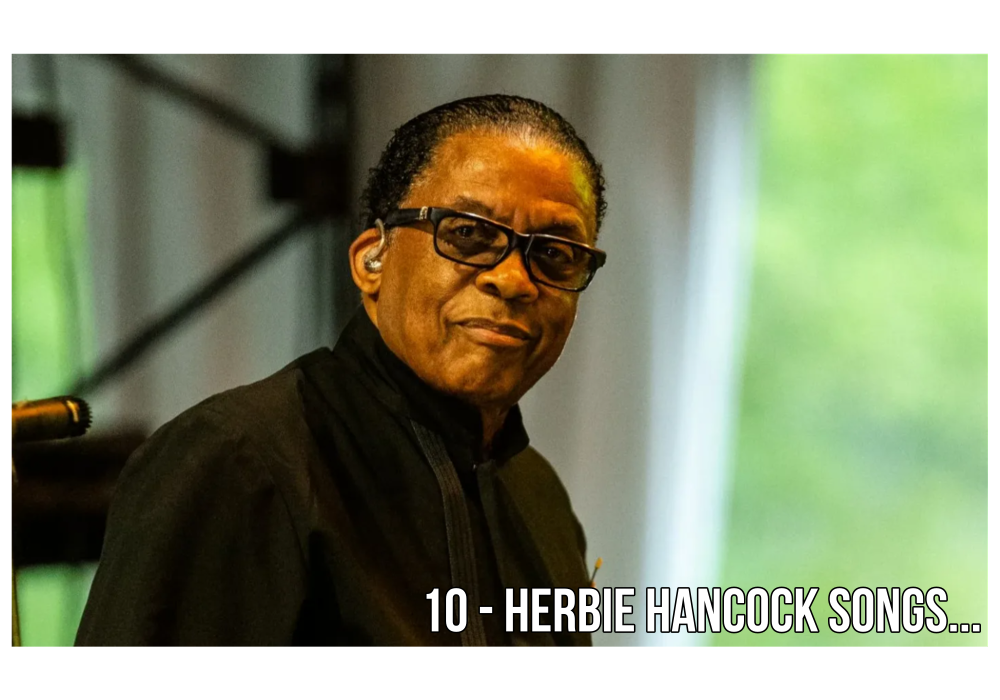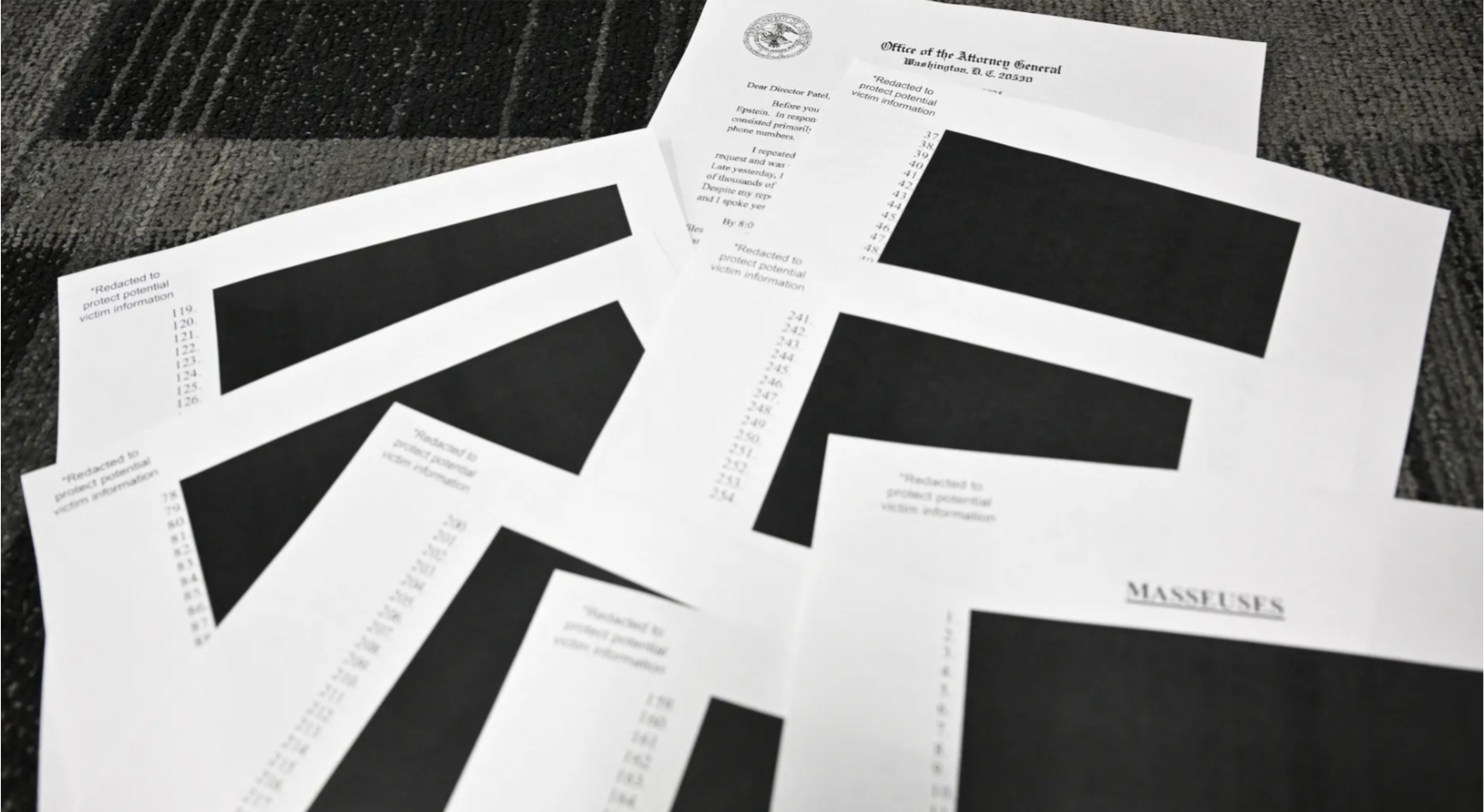(ThyBlackMan.com) Few artists in modern music embody the spirit of innovation quite like Herbie Hancock. From his formative years with Miles Davis to his own trailblazing solo career, Hancock has consistently pushed the boundaries of jazz, blending tradition with bold experimentation. His discography spans decades, yet it remains remarkably cohesive—united by a deep commitment to groove, harmonic exploration, and fearless reinvention.
This list of ten standout tracks doesn’t aim to be a “greatest hits” compilation. Instead, it offers a curated look at the scope of Hancock’s artistry—from modal masterpieces and post-bop gems to funk-infused epics and ambient reflections. Each selection illustrates a different chapter in his ongoing musical conversation, one that continues to influence generations of musicians and listeners alike.
Whether you’re revisiting familiar favorites or discovering his catalog for the first time, these ten tracks offer a compelling entry point into the work of a composer and pianist whose legacy is both enduring and continually evolving.

1. Cantaloupe Island
“Cantaloupe Island” remains one of Herbie Hancock’s most iconic tunes—not just because of its catchy piano riff, but because it offers a masterclass in economy and groove. Clocking in at just over five minutes, it doesn’t rely on virtuosic flurries or complex modulations. Instead, it thrives on a hypnotic groove that perfectly balances repetition and exploration. The essence of the tune lies in Hancock’s deft control over space and timing; every chord he plays seems to hang in the air just long enough to intrigue the listener before resolving with satisfying clarity.
A key aspect that makes “Cantaloupe Island” stand out is its cross-generational appeal. Hancock wasn’t trying to impress critics with cerebral progressions—he was writing something people could feel. That’s a big part of why the tune endures: it’s rhythmic without being overbearing, melodic without being saccharine. Freddie Hubbard’s trumpet solo, for instance, soars above the chords with both technical agility and emotional depth, elevating the piece while staying anchored to the groove.
Beyond its jazz roots, “Cantaloupe Island” has become a cultural reference point. Its 1993 sampling by Us3 in “Cantaloop (Flip Fantasia)” introduced a new generation to Hancock’s work, placing the tune within the framework of hip-hop, acid jazz, and neo-soul. That remix wasn’t just a nostalgic throwback—it was a revival, a second life for a song already rich with nuance. It proved Hancock’s music could easily adapt to the sonic palette of the ’90s—and beyond.
In today’s streaming landscape, where jazz is being rediscovered by younger audiences through lo-fi beats and curated playlists, “Cantaloupe Island” continues to stand tall. Its clean structure and infectious swing make it ideal for everything from casual listening to intensive study. This is Herbie Hancock building a musical bridge between eras, and he did it all without saying a word.
2. Chameleon
“Chameleon” is not just a song—it’s a full-body experience. From the moment that famous bassline kicks in, you know you’re stepping into uncharted territory. At over 15 minutes long, it defies the pop standard of brevity and builds its universe one layer at a time. Hancock’s use of ARP synthesizers and the Hohner D6 clavinet creates a pulsing, organic texture that feels alive, breathing in time with the rhythm section’s every move.
What separates “Chameleon” from other jazz-funk tunes of the era is its sense of control amidst chaos. Each solo—whether it’s from Hancock’s keyboard arsenal or Bennie Maupin’s growling bass clarinet—is intricately woven into the track’s DNA. These aren’t indulgent improvisations; they’re essential contributions that evolve the song’s identity as it unfolds. You can’t just dip into “Chameleon” for a taste—you have to let it take you for the ride.
From a technical perspective, “Chameleon” is studied by musicians for its rhythmic complexity and arrangement. Hancock often shifts harmonic patterns subtly, keeping the groove consistent while nudging the music into new emotional spaces. Harvey Mason’s drum work deserves special praise for its ability to maintain momentum without ever overwhelming the flow. Every cymbal hit and snare snap is calibrated for maximum effect.
In 2025, “Chameleon” continues to be sampled, covered, and reimagined across genres. Its influence can be felt in everything from hip-hop production to EDM build-ups to jam band improvisations. It’s the kind of song that feels fresh no matter how many times you hear it—like a living organism that morphs slightly with each listen. That’s the beauty of Herbie Hancock’s artistry: timeless innovation that keeps evolving with the listener.
3. Maiden Voyage
“Maiden Voyage” captures something rare in jazz: a feeling of awe. Not in the sense of virtuosity—though the musicianship is world-class—but in its ability to evoke wonder, as if setting out on a mystical journey. The song opens with a series of suspended chords that don’t so much resolve as hover, inviting the listener into a soundscape that is simultaneously grounded and dreamlike. Hancock’s intention to create “tone poems” about the sea is realized not just through the title, but through every phrase, every sonic choice.
One of the most haunting aspects of the track is its harmonic ambiguity. The voicings Hancock uses on the piano are open and floating, creating a sense of endless horizon. Freddie Hubbard’s trumpet enters like a lighthouse piercing through fog—melodic, yet distant. George Coleman’s tenor saxophone provides the emotional counterpoint, rich and reflective, offering a conversational depth that rewards close listening.
The rhythm section of Ron Carter and Tony Williams deserves its own spotlight. Carter’s bass provides an anchor without ever being restrictive, and Williams—only 19 at the time—delivers one of the most sophisticated performances in jazz history. His cymbal work alone dances between structure and freedom, mirroring the ebb and flow of waves. The interplay between the musicians here is not about dominance, but collective storytelling.
For modern audiences, “Maiden Voyage” has a cinematic quality that transcends genre. It wouldn’t feel out of place scoring a prestige TV series or a moody art film. But more importantly, it remains a spiritual balm for listeners who seek refuge in music. In an age of noise and distraction, “Maiden Voyage” still dares to be still—and that’s precisely why it endures.
4. Watermelon Man (1962 / 1973)
“Watermelon Man” is one of the rare jazz tunes that has managed to reinvent itself without losing its essence. The original 1962 version, from Hancock’s debut album Takin’ Off, is deceptively simple—a funky, blues-inflected number that rides on a laid-back swing. With Dexter Gordon on sax and Donald Byrd on trumpet, the track has a cheerful bounce that made it accessible to a wide audience. It’s playful and breezy, yet expertly crafted, with Hancock showing his early knack for melodic hooks.
What made the original “Watermelon Man” so revolutionary at the time was how it blurred the line between jazz and popular music. Hancock wasn’t dumbing anything down; he was elevating the familiar. His piano riff is instantly hummable but harmonically rich, setting the stage for solos that are both relaxed and compelling. The tune became a hit, establishing Hancock not just as a sideman, but as a force in his own right.
Then came the 1973 version, which turned the piece inside out. On Head Hunters, “Watermelon Man” opens with the sound of someone blowing into a beer bottle—a reference to African Pygmy music—which sets a tribal tone before diving into a heavy, psychedelic funk groove. Hancock swaps the acoustic piano for synthesizers and electric keys, while Paul Jackson’s bass line and Harvey Mason’s drums lock into a rhythm that feels both primal and futuristic.
This reimagined “Watermelon Man” wasn’t just a remix; it was a redefinition. It pushed the limits of what jazz could be, embracing electronic textures and polyrhythms long before those became mainstream in fusion and hip hop. The fact that the same musician could produce both versions—each iconic in its own right—speaks volumes about Hancock’s range and vision.
Today, musicians and producers study both iterations of “Watermelon Man” for entirely different reasons: one for its compositional clarity, the other for its boundary-pushing sonics. DJs still spin the funkier version in clubs. Jazz combos still cover the original in small venues. Either way, the song is alive—proof that true innovation has no expiration date.
5. Actual Proof
“Actual Proof” isn’t just one of Hancock’s most technically jaw-dropping tracks—it’s also one of his boldest artistic statements. Taken from the Thrust album, it was originally composed as a demonstration piece for a film called The Spook Who Sat by the Door, but it quickly grew into something much bigger. It stands as a towering example of jazz-funk fusion, a track so rhythmically intricate and harmonically dense that musicians still dissect it to this day. Listening to it is like watching a complex machine whirl into motion—chaotic at first, but revealing a beautiful inner logic the deeper you go.
What makes “Actual Proof” so captivating is how tightly it’s wound. The rhythmic foundation shifts subtly yet relentlessly, with Paul Jackson’s basslines weaving between downbeats like a dancer dodging raindrops. His lines are not just rhythmical; they’re melodic, counterbalancing Hancock’s darting keyboard runs. Hancock, meanwhile, delivers some of the most blistering Fender Rhodes solos ever recorded—angular, percussive, and filled with a kind of cosmic urgency. Every note feels alive and in motion.
Drummer Mike Clark’s contribution also can’t be overstated. His use of linear drumming and ghost notes adds layers of rhythmic complexity that make the groove feel like it’s breathing. And yet, despite the track’s virtuosic demands, it never becomes clinical. That’s the real magic of “Actual Proof”—it swings. It grooves. It doesn’t just impress the mind; it moves the body.
In today’s musical landscape, “Actual Proof” feels more at home than ever. It wouldn’t sound out of place in a modern jazz fusion set or even sampled by a progressive hip-hop artist. Its textures and rhythms align with the precision of electronic music while retaining the soul of live improvisation. It’s futuristic and feral—proof that Hancock didn’t just follow trends; he anticipated them.
6. Speak Like a Child
“Speak Like a Child” is a gentle rebellion. While much of jazz in the late ’60s leaned toward avant-garde aggression or political militancy, Hancock went inward. This track, the title piece of a profoundly beautiful album, chooses grace over fire. Inspired in part by the innocence and clarity of a child’s perspective, Hancock composed a piece that feels both whimsical and wise—like the voice of someone who has seen the world but still believes in its softness.
From the first few bars, the instrumentation stands out. Instead of the traditional jazz quartet or quintet, Hancock assembled a sextet that includes unusual pairings—like flugelhorn, bass trombone, and alto flute—resulting in a warm, cushiony sonic texture. There’s a remarkable absence of sharp edges. Everything here feels pillowy, fluid, and pastel-colored, evoking the title’s sense of childlike wonder.
Hancock’s piano work is delicate but emotionally resonant. He avoids overt virtuosity in favor of subtle shifts in dynamics and voicing. His harmonic language here is rich with suspended chords and unexpected resolutions that evoke a sense of searching—not for complexity’s sake, but for emotional truth. Ron Carter’s bass and Mickey Roker’s gentle brushwork on drums further enhance the track’s atmosphere of quiet reverence.
Listening to “Speak Like a Child” today is like stepping into a private sanctuary. In a world often saturated with noise and posturing, this song remains a reminder of the power of restraint. It’s not just relaxing—it’s revealing. For those who think jazz is all bluster and showmanship, this song shows how beautiful it can be when it simply listens to itself.
7. Rockit
“Rockit” was the track that reintroduced Herbie Hancock to a generation who didn’t grow up on Blue Note LPs or the fusion-heavy Head Hunters. In an era dominated by MTV and synthesizers, Hancock didn’t resist the new wave—he helped define it. Teaming up with producer Bill Laswell and hip-hop innovator Grand Mixer DXT, “Rockit” became a sensation, both for its sound and its now-iconic music video, featuring surreal robot mannequins designed by artist Jim Whiting.
Musically, “Rockit” is revolutionary. It blended early hip-hop turntablism with electro-funk, all grounded by Hancock’s minimalist keyboard riffs. Unlike his earlier keyboard work, which was harmonically lush and dense, the keys here are clipped, rhythmic, and percussive. It’s less about melodic expression and more about groove and space—a radical departure for a jazz pianist, and yet unmistakably Hancock.
What’s especially powerful about “Rockit” is how it collapsed cultural barriers. Hancock, a jazz giant, was collaborating with underground hip-hop artists at a time when most of his contemporaries dismissed rap as a fad. He didn’t just dabble—he embraced it. The track became one of the first mainstream bridges between jazz and hip-hop, a relationship that would later blossom into full subgenres like jazz rap.
Today, “Rockit” is often seen as a precursor to the mashup culture we live in. It was sampled by future generations, covered by electronic artists, and remains a staple on breakdancing and electro-funk playlists. And it’s more than nostalgia—it still sounds daring. “Rockit” reminds us that innovation doesn’t have an expiration date, and Hancock was always ahead of his time.
8. Butterfly
“Butterfly” is the serene heart of Thrust, a dreamy contrast to the hard-hitting funk of “Actual Proof” and “Spank-A-Lee.” Co-written with Bennie Maupin, the track is a gentle unfolding of sound—equal parts soul, jazz, and ambient exploration. From the moment Hancock’s Rhodes chords float in, you know you’re entering a meditative space. It’s sensual without being overt, spiritual without preaching—a rare achievement in any genre.
Maupin’s flute lines are central to the track’s otherworldly feel. His breathy tone glides over the groove like mist over water, while Hancock’s comping is soft and spatial. Instead of pushing the harmony forward, he allows it to linger and shimmer. The rhythm section, meanwhile, is subdued but locked in, creating a bed of sound that supports the composition’s weightless quality.
What sets “Butterfly” apart is its mood. It doesn’t build to a climax or descend into chaos. It stays in one emotional register—but that register is vast. Each phrase feels like an exhale, a moment of release. It’s easy to imagine this track playing during a sunrise or drifting through an ambient jazz café. And yet, there’s complexity underneath the calm: layered voicings, subtle rhythmic syncopations, and harmonic turns that keep the listener emotionally tethered.
“Butterfly” has found second and third lives through reinterpretations and samples. It was re-recorded with vocals in later decades, and sampled by hip-hop artists and chillout DJs alike. It speaks to the track’s versatility and timelessness. Whether you’re a crate-digging producer or a casual listener looking for peace, “Butterfly” is an eternal glide through sonic bliss.
9. The Sorcerer
“The Sorcerer” is an aptly named piece—it weaves a kind of mysticism through shifting harmonies and elusive rhythms that defy easy categorization. As part of Miles Davis’ Second Great Quintet, Hancock was not just a pianist but a sonic architect. This composition, featured on the album Sorcerer, captures him during one of the most creative stretches of his early career. The tune isn’t something you tap your foot to casually—it challenges the listener to engage, to pay attention, and to let go of conventional expectations.
The harmonic language of “The Sorcerer” is dense and often unresolved. The melody twists and stretches, seeming to drift just slightly off-axis from the rhythm, which itself is fragmented and abstract. Hancock’s piano doesn’t play a background role here—it interacts with the horns and rhythm section like a trickster, slipping in sly dissonances or tossing in unexpected chord substitutions that reframe the mood in an instant. He plays like someone cracking open a locked box, piece by piece.
Miles Davis, always the minimalist, leaves plenty of space for his bandmates to explore, and Hancock uses that space like a master painter given a blank canvas. The result is a sonic environment that’s more atmosphere than destination—dark, alluring, and slightly unstable. What sounds chaotic on first listen reveals itself as methodically woven upon closer inspection.
In 2025, “The Sorcerer” feels eerily modern. Its fragmented, nonlinear approach is echoed in avant-garde jazz collectives, experimental classical ensembles, and even some ambient producers. It’s not a track to play in the background—it’s one to get lost in, to return to repeatedly like a mysterious book whose meaning keeps changing. It stands as a document of Hancock’s early experimental courage and a benchmark for those trying to stretch jazz’s harmonic boundaries.
10. Vein Melter
“Vein Melter” closes Head Hunters not with a bang, but with a kind of slow emotional bleed. If “Chameleon” and “Watermelon Man” were about swagger, groove, and forward momentum, “Vein Melter” is about stillness, reflection, and release. It’s an ambient prayer whispered through electronic haze, and it’s arguably one of Hancock’s most underrated compositions.
The song unfolds with almost no structure—an ambient wash of Rhodes piano, synths, and restrained percussion. Benny Maupin’s haunting saxophone enters like a foghorn in a dream, not to announce arrival but to mark the soul’s drifting. Hancock’s keyboard textures feel suspended in midair, sustained and subtly shifting like thoughts that won’t settle. It’s a performance that resists climax; instead, it explores emotional weight through minimal motion.
Part of what makes “Vein Melter” so moving is its ambiguity. Is it mourning? Is it healing? Is it resignation or peace? It’s never explicitly stated, which gives the listener freedom to place their own experiences into its hollowed-out spaces. The track has long been beloved by ambient and electronic music fans for this very reason—it’s a blank page painted in shadow tones.
Even in the current age of ambient resurgence and lo-fi aesthetics, “Vein Melter” feels like it belongs on a playlist alongside artists like Brian Eno, Floating Points, or Nala Sinephro. It could easily be played in a meditative setting, an art gallery, or during a solitary drive home in the rain. Its quiet power lies in how it doesn’t compete for attention—it simply lingers in your emotional field, long after the final note fades.
For those unfamiliar with Hancock’s softer side, “Vein Melter” offers a gateway into his ability to convey feeling without saying much at all. It’s the kind of track you don’t play to analyze—you play it to feel something. And in that way, it quietly achieves transcendence.
Herbie Hancock’s music has always been about movement—across styles, eras, and emotional landscapes. The ten tracks explored here are not just testaments to his virtuosity, but to his vision: a lifelong pursuit of sound that challenges conventions while remaining deeply human.
From the angular abstractions of “The Sorcerer” to the meditative serenity of “Vein Melter,” Hancock reminds us that jazz is a living art form—one that grows, adapts, and responds to the times without losing its core. His work stands as a bridge between acoustic tradition and electronic innovation, between deeply rooted rhythm and abstract harmony.
In revisiting these pieces, we’re reminded that Herbie Hancock is not simply a figure in jazz history. He is a vital force within it—continually redefining what the music can be. These compositions invite us to listen closely, think deeply, and remain open to the unexpected. And that, perhaps, is Hancock’s most enduring lesson.
Staff Writer; Jamar Jackson

















Leave a Reply